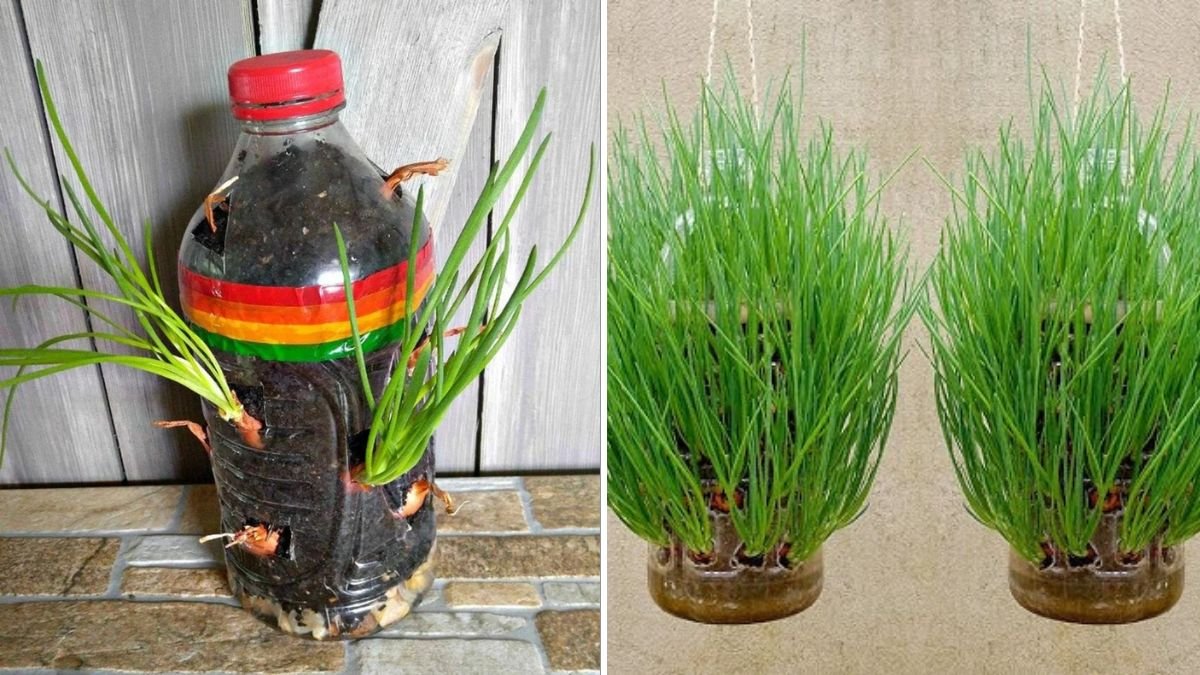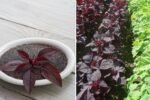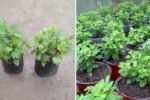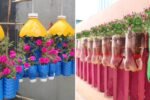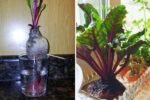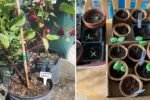If you’ve ever thought about growing onions but don’t have much space or a traditional garden, here’s some exciting news — you can grow fresh, flavorful onions right at home using just a few small plastic bottles! This simple, sustainable method is not only great for your kitchen garden but also helps reduce plastic waste, making it a win-win for both your pantry and the planet.
Whether you live in a small apartment, a suburban home, or anywhere in between, learning how to grow onions in plastic bottles is an easy and budget-friendly gardening hack that delivers surprisingly big results. Let’s dive into this clever DIY gardening project and see how you can harvest crisp, aromatic onions without even touching the soil in your backyard.
Why Grow Onions in Plastic Bottles?
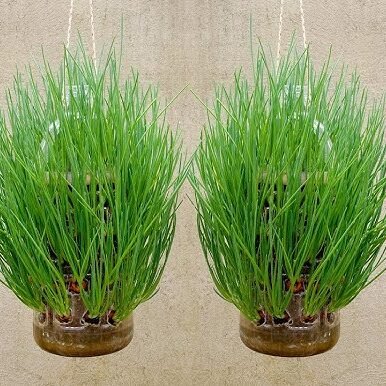
Before we get to the “how,” let’s talk about the “why.” Plastic bottles are one of the most common household items that usually end up in the trash. Reusing them for gardening not only reduces waste but also makes planting more accessible to anyone, regardless of space or budget.
Here’s why this method works wonders:
- Compact and Space-Saving – Perfect for balconies, windowsills, and patios.
- Eco-Friendly – Gives plastic bottles a second life and reduces landfill waste.
- Easy Maintenance – Transparent bottles make it easy to monitor water levels and root growth.
- Pest Control – Less exposure to soil pests compared to traditional garden beds.
- Year-Round Growth – You can grow onions indoors, no matter the season.
It’s sustainable gardening made simple — and it’s perfect for beginners!
What You’ll Need
You don’t need fancy equipment or a greenhouse setup for this project. Here’s a list of basic supplies:
- 3 to 5 small plastic bottles (1–2 liters each)
- A sharp knife or scissors for cutting holes
- Onion bulbs or onion sets (available at any garden store)
- Potting soil or compost-rich garden soil
- Watering can or spray bottle
- A sunny window or balcony with at least 4–6 hours of sunlight daily
Pro tip: If you’re using used bottles, make sure to clean them thoroughly and remove the labels to avoid any chemicals or dyes leaching into the soil.
Step-by-Step Guide: How to Grow Onions in Plastic Bottles
Step 1: Prepare the Bottle
Start by cutting the top portion of the bottle (around 2–3 inches from the cap). This open end will serve as your planter’s top. Next, poke small holes in the bottom for drainage. On the sides of the bottle, cut several round openings about 1–1.5 inches wide — these will be the “planting holes” where your onion bulbs will peek out and grow.
If you’re planning to grow green onions (scallions), smaller holes work fine. For bulb onions, make them slightly larger.
Step 2: Add Soil and Layer the Bulbs
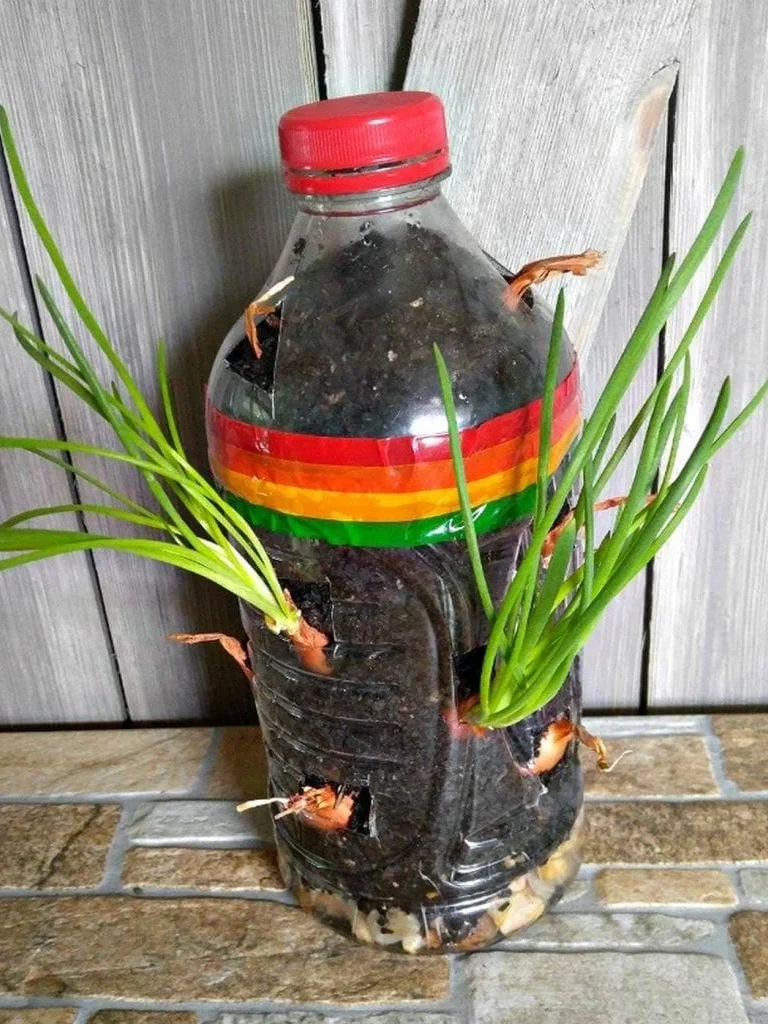
Fill the bottle with a few inches of soil, then insert onion bulbs through the side holes, making sure the pointed tops face outward. Continue layering — soil, bulbs, soil — until the bottle is full. Finish with a thin layer of soil on top.
The idea is to have onion bulbs facing outward through each hole, giving them space to grow green shoots.
Step 3: Water Gently and Consistently
After planting, water the bottle lightly. The soil should stay moist but not soggy. Because plastic bottles have limited drainage, it’s important not to overwater — too much moisture can cause rot.
A good trick is to use a spray bottle for even, controlled watering. You’ll notice the green shoots emerging in as little as 7–10 days.
Step 4: Provide Light and Warmth
Onions love sunlight! Place your bottle planters in a bright, sunny spot such as a windowsill, balcony, or near a kitchen window that gets 4–6 hours of sunlight daily.
If you’re growing indoors during colder months, consider using a small grow light to supplement natural light. The warmth will also help onion roots establish faster.
Step 5: Maintenance and Growth
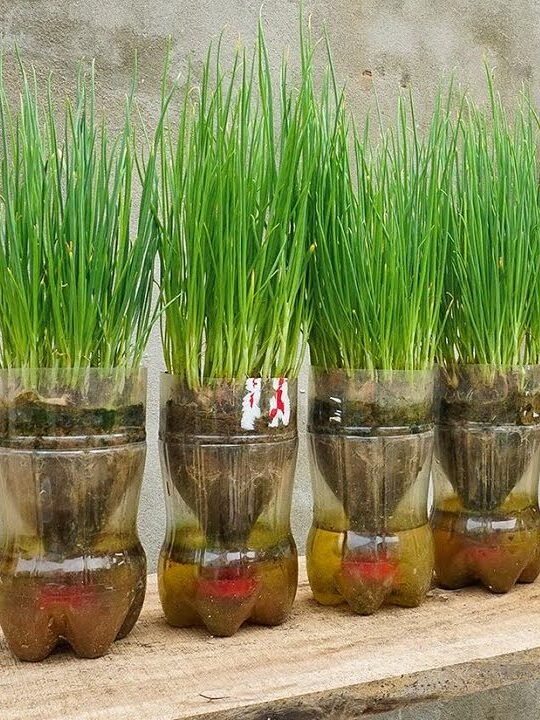
- Water regularly but avoid soggy soil.
- Rotate the bottle every few days to ensure even sunlight exposure.
- You can trim the green shoots when they reach 6–8 inches — these are your fresh green onions!
- If you’re growing bulb onions, allow them to mature for about 90–120 days before harvesting.
As they grow, the clear plastic bottle lets you easily observe root health and moisture levels — one of the biggest perks of this method.
Step 6: Harvest Time!
When the green tops start to yellow and fall over, your onions are ready for harvest. Simply remove the bottle’s outer layer, gently loosen the soil, and pull out your fully grown onions.
You’ll be amazed at how large and healthy they’ve grown, all inside a recycled bottle!
Best Onion Varieties for Bottle Growing
Not all onions are created equal when it comes to container gardening. Here are a few varieties that thrive in compact setups:
- Green Onions (Scallions) – Fast-growing and perfect for small bottles.
- Red Creole – Compact and rich in flavor.
- Yellow Granex – A mild, sweet variety ideal for salads and cooking.
- Evergreen Bunching Onions – Great for continuous harvesting.
If you’re new to gardening, start with green onions — they grow quickly, require minimal care, and can be harvested multiple times.
Pro Tips for Maximum Results
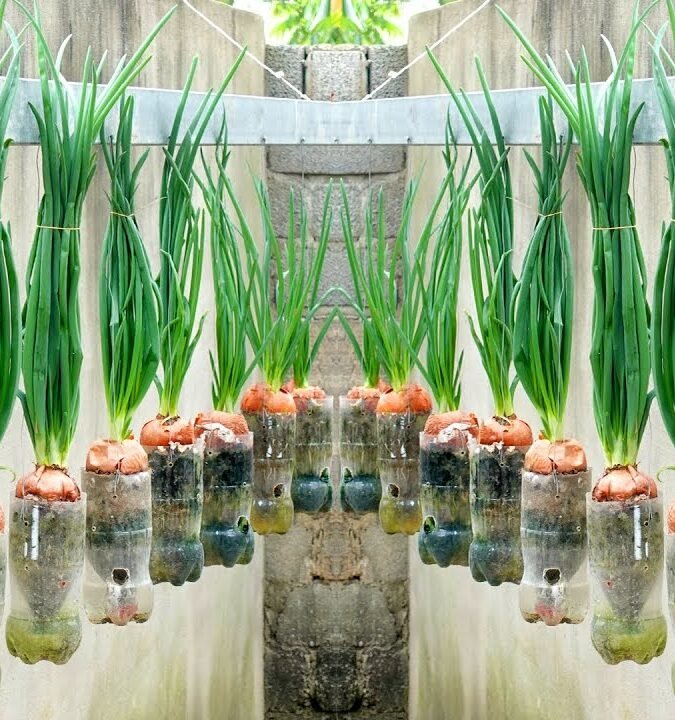
Want to boost your onion yield and keep your plants thriving? Try these pro gardener tips:
- Fertilize Monthly – Use a liquid organic fertilizer or compost tea every 3–4 weeks.
- Use Mulch – A light mulch layer on top can help retain moisture.
- Reuse the Soil – After harvesting, mix old soil with fresh compost and reuse it for your next batch.
- Regrow from Scraps – You can even regrow onions from the root base of store-bought ones!
- Add Companion Plants – Garlic, lettuce, or herbs like chives can share the same growing space for pest control and better growth.
The Eco-Friendly Impact
This onion-growing hack isn’t just about convenience — it’s a small step toward sustainable living. By repurposing plastic bottles, you’re reducing waste and creating a self-sustaining food source at home.
Millions of plastic bottles end up in landfills every year, but with a little creativity, they can become productive planters that supply your kitchen with fresh, organic onions — all while helping the environment.
Common Mistakes to Avoid
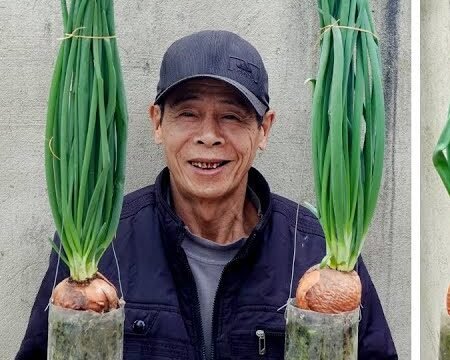
Even simple methods can go wrong if you’re not careful. Here’s what to watch out for:
- Overwatering – Leads to root rot.
- Insufficient Light – Causes thin, weak shoots.
- Crowded Bulbs – Don’t overfill the bottle; give each bulb space.
- Ignoring Drainage Holes – Proper drainage is key to healthy roots.
Remember: onions are hardy plants, but they still need balance — moisture, light, and airflow.
Final Thoughts: A Small Bottle, A Big Harvest
Growing onions in small plastic bottles is one of those clever home gardening ideas that prove you don’t need a backyard or expensive tools to grow your own food. With just a few bottles, a handful of soil, and some patience, you can enjoy an endless supply of crisp, aromatic onions — right from your windowsill.
This method is affordable, fun, and sustainable — making it perfect for families, urban gardeners, and anyone looking to live a little greener. So next time you finish a soda or water bottle, don’t toss it — turn it into your next onion planter and watch the magic happen!
